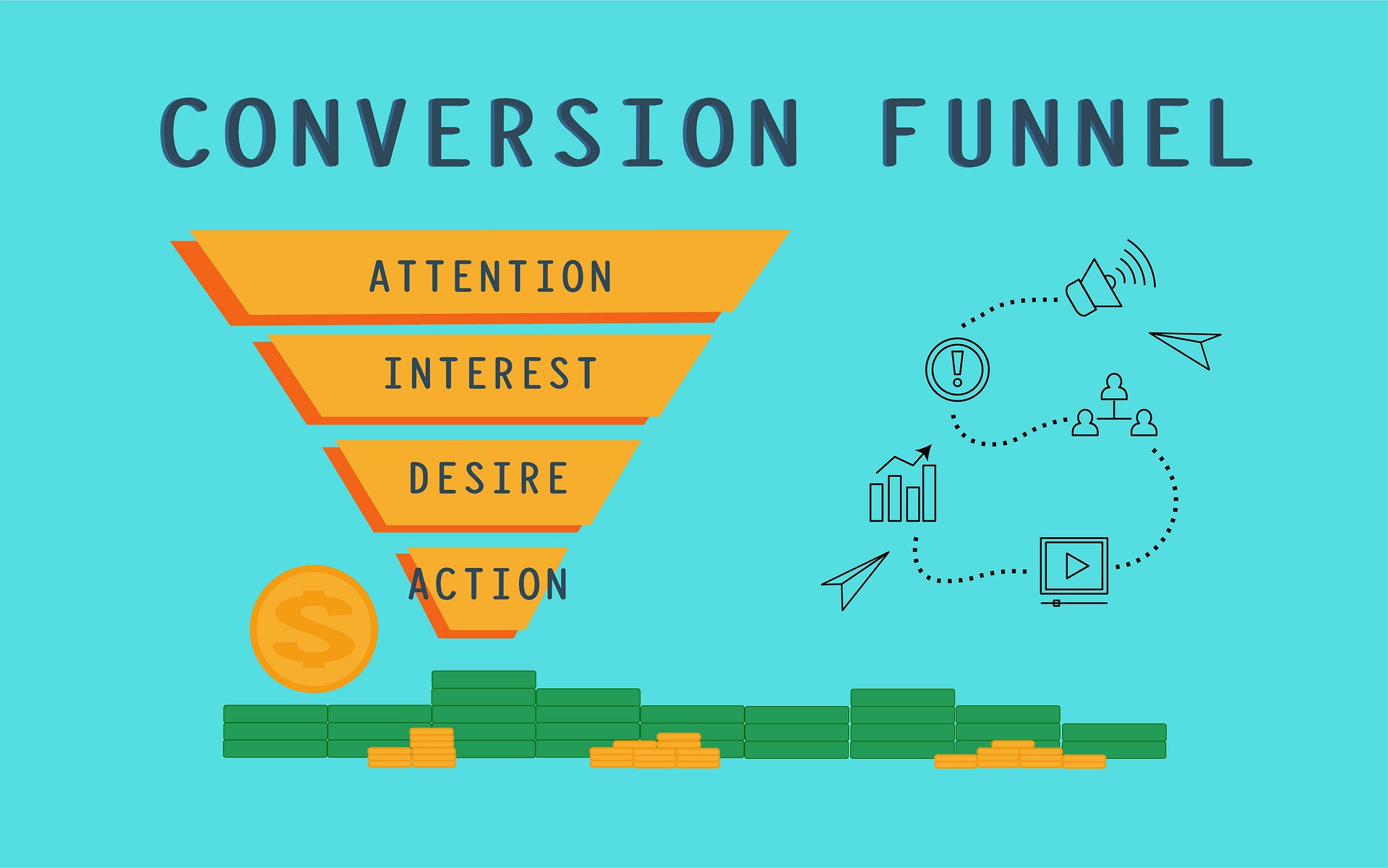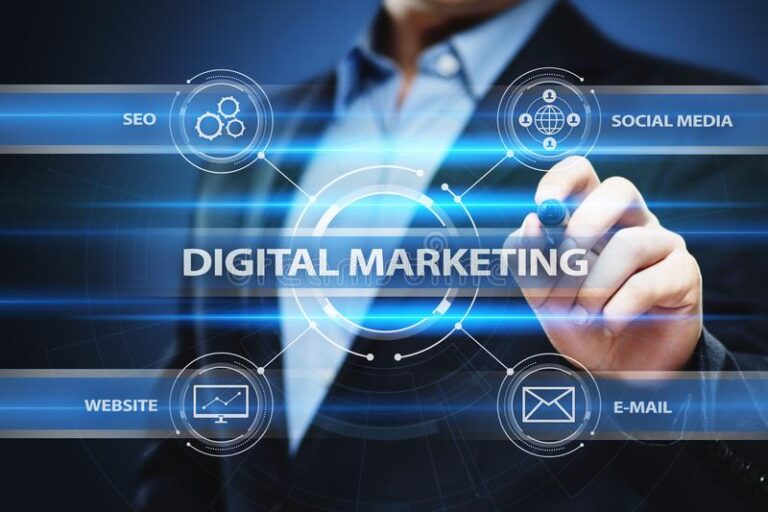We all understand the pain of losing customers. Those famous words, “I’ll get back to you” are heartbreaking to any business or brand owner. And for good reason too. Most times, these people never actually get back to you. But what if there was a way to get most of them back? What if it was possible to be a part of their journey and aid them in buying from you? Guess what? You can use something called a sales funnel. Want to understand what it is and how to use it? Then this is the article for you. In this article we’ll discuss:
- What is a sales funnel is
- Stages of a sales funnel
- Why you should have a sales funnel
- How to create a sales funnel
What is a Sales Funnel?
Table of Contents
A sales funnel is the summation of all the stages a potential customer or buyer goes through before purchasing from you. Also known as a purchase funnel consists of the journey a person makes to go from a visitor to a proper customer. Let’s say you have a website or a blog. Your sales funnel is the journey from random visitors to your website or blog to buying a product listed on that blog post or website.
What are these stages, you might ask? What is the actual process involved and how do I identify them? We’ll talk about that subsequently.
Stages of a Sales Funnel:
Stage funnels will differ from business to business depending on the processes one goes through to purchase from that company, but we generally have four major stages in marketing. They are:
Awareness:
This is the beginning or top stage. At this stage, the potential customer is hearing about your product or service for the first time. He/She is just becoming aware of your product or service. Information about your business could have come from anywhere; online ads, physical ads, google, social media, etc. They become aware that your products are a solution to their problems.
An example of an awareness stage is coming across an ad on Instagram for an online store that sells fashionable blouses for nursing mothers.
Unfortunately, from this stage, numbers begin to drop. The number of people that make up the awareness stage of the funnel declines as we approach the interest stage. To reduce this, effective marketing and adequate product descriptions should be used.
Interest:
This is the next stage. When prospects become aware of your brand, they now think about how it can solve a problem they’re facing. They do their research to make sure you’re giving them the best deal, the most efficient solution.
Using our previous example, the interest stage would be, a nursing mother stumbling on this ad. Her interest is piqued so she looks up your store, and looks at the blouses and styles you’re offering. She might also check out other similar stores to compare and make sure you have the best styles for her.
Decision:
Here, your prospects are convinced that your product can solve their problem. They dig deeper for more information; mostly purchasing information, pricing and packaging. Continuing with our example, at this stage, the nursing mother picks a couple of blouses and looks up their prices and payment options.
Action:
This is the last and most important stage of the funnel. The prospect becomes a customer or doesn’t. This stage is important because here, relationships are cultivated with the buyers. This will make them returning customers or increase their chances of buying from you if they didn’t.
Importance of a Sales Funnel:
Above, we discussed the meaning and stages of a sales funnel. So, now you understand what it is and how it works, why should you have one? Why is it necessary that every business should have a model of their sales funnel? What happens if you don’t have one?
Sales funnels help you to accurately measure your business model. They tell you where you’re losing customers, where to improve or focus your efforts and what strategy to take to retain customers. For example, if you lose customers before you get to the decision stage, it means you don’t hold your prospects’ interest and need better, more captivating content. If you lose more customers at the awareness stage, it means you need better brand exposure as people don’t hear about your business enough.
A sales funnel gives your business direction. It helps you understand your prospects, know what they like and what kind of content they respond best to. Without it, you’re likely going to be without focus, blindly casting your net into the open sea, not knowing where exactly to go fishing.
It will ultimately save you time and effort, allow you to let go of uninterested leads early and focus your attention on good prospects, which will eventually give you more success, more customers and the ultimate goal of any business; more money.
You understand why you should have a sales funnel. Your next question is probably, “How?” “How do I go about this huge task, especially with no digital marketing qualifications?” Keep reading to know-how.
How to Create a Sales Funnel for Your Business:
To create a workable sales funnel, you should have prospective customers for your business or brand already. If you’ve handled that, then take these steps:
Data collection:
You need to understand your customers, and know their likes and dislikes, preferences, goals and challenges. You need to know their struggles, why they don’t make purchases and their suggestions for improvement. This is where the gathering of data and survey taking comes in. Without information about your prospects, you can’t correctly serve them. Based on the information you’ve collected, you can tailor your content and products to suit your prospects better.
Offer value:
To build a sales funnel, you need to get interested prospects. Offer valuable content that can capture the attention of your target audience. The aim of this is to get leads. Post different kinds of content in different formats across your platforms (websites, blogs, social media pages) with forms or pop-ups to aid your agenda. You can also make use of ads, although you should be careful to run these ads on platforms where your target audience can be found. For instance, if your target is professionals, then LinkedIn is your best bet. For fashion influencers, head over to Instagram or TikTok.
Create your landing page:
Your landing page is the page that prospects are directed to when they click on your business ad, content links or sign up for any of your digital products. Because this is the first contact they’ll have with you, it should communicate who you are and how you can solve their problems without leaving any room for doubt. Also, your landing page is the best way to collect their contact information for further communication. It should also have a noticeable call to action that tells visitors what to do.
Email Marketing:
Email is one of the most effective ways to get prospects to the end of your sales funnel. Send email updates regularly, but not so frequently that you become a nuisance. Begin your email campaign with educational content rather than talk about sales. Make sure you talk about things they will be interested in as you slowly build up your products and how you will be of help to them. As you close your campaign, make them a mouthwatering offer; discounts, bonuses, extra packages, etc. This will help them to quickly purchase something from you.
Relationship:
Don’t forget to keep the communication going. Nurture the relationship you’ve built with them; don’t just leave them hanging. Continue to send content that they might find interesting or useful. Remember to thank them for their purchases and send regular updates on sales or promos. This will help to build trust and loyalty for your business to your customers.
Do you already have a sales funnel but you’re still having issues with customer conversion and retention? Then your sales funnel has issues and needs to be evaluated. Ask yourself questions at each stage of your sales funnel and pay careful attention to whether you get results with your brand awareness or educational and promotional content at each stage.
Figure out what content your audience responds to best. This will help you know where your strategy needs to be worked on, what should stay and what should be changed or improved. To get the most out of your sales funnel, pay attention to the results, specifically how many conversions you make from your email campaigns and landing pages and how many customers return to make another purchase.
Conclusion
In conclusion, a sales funnel is not the end of your work to get your business to its highest potential, but it’s a giant leap in the right direction. Take time to build a proper sales funnel that shows your goals and your target’s needs. And don’t just stop there. Continue to observe it over time, tweak it where necessary as your business grows and you’ll surely get to where you want to be.
Of course, you’ll probably need professional help the bigger you get, or maybe you want to create a sales funnel now but you’re still not confident you’ll do a solid job on your own? Not a problem. Oparawhite Global offers you a host of digital solutions for your business, from simple sales, funnel to digital and content marketing to website and blog creation. Contact us now at oparawhiteglobal.com or visit our LinkedIn profile at Oparawhite Global LTD. Any thoughts? Leave a comment below. Don’t forget to share this article with someone who’ll find it helpful.




